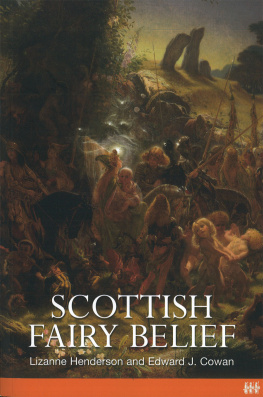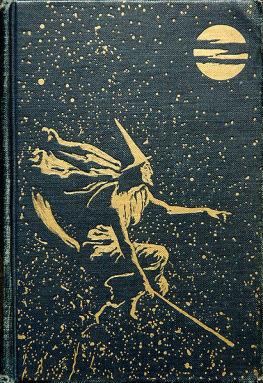Footnotes
a sequel to this volume
the mark on Adam's Peak in Ceylon is, by the Buddhists, ascribed to Buddha; by the Mohammedans, to Adam. It reminds one of the story of the lady and the vicar, viewing the moon through a telescope; they saw in it, as they thought, two figures inclined toward each other: "Methinks," says the lady," they are two fond lovers, meeting to pour forth their vows by earth-light." "Not at all," says the vicar, taking his turn at the glass; "they are the steeples of two neighbouring churches"
Faerie Queene, III. c. iii. st. 8, 9, 10, 11. Drayton, Poly-Olbion, Song VI. We fear, however, that there is only poetic authority for this belief. Mr. Todd merely quotes Warton, who says that Spenser borrowed it from Giraldus Cambrensis, who picked it up among the romantic traditions propagated by the Welsh bards. The reader will be, perhaps, surprised to hear that Giraldus says nothing of the demons. He mentions the sounds, and endeavours to explain them by natural causes. Hollingshed indeed (l. i. c. 24.) says, "whereof the superstitious sort do gather many toys."
for a well-chosen collection of examples, see the very learned and philosophical preface of the late Mr. Price to his edition of Warton's History of English Poetry, p.28 et seq.
in the Middle Ages the gods of the heathens were all held to be devils.
is the Ionic form of , and is nearly related to the German thier, beast, animal. The Scandinavian dyr, and the Anglo-Saxon deon, have the same signification; and it is curious to observe the restricted sense which this last has gotten in the English deer.
preface to Warton, p. 44; and Breton philologists furnish us with an etymon; not, indeed, of Fairy, but of Fada. "Fada, fata, etc.," says M. de Cambry (Monumens Celtiques), "come from the Breton mat or mad, in construction fat, good; whence the English, maid."
see below, France. It is also remarked that in some of the tales of the Pentamerone, the number of the Fate is three; but to this it may be replied, that in Italy every thing took a classic tinge, and that the Fate of those tales are only Maghe; so in the Amadigi of Bernardo Tasso we meet with La Fata Urganda. In Spain and France the number would rather seem to have been seven. Cervantes speaks of "los siete castillos do las siete fadas;" in the Rom. de Ia Infantina it is said, "siete fadas me fadaron, en brazos de una ama mia," and the Fes are seven in La Belle au Bois dormant. In the romance, however, of Guillaume au Court-nez, the Fes who carry the sleeping Renoart out of the boat are three in number--See Grimm Deutsche Mythologie, p. 383.
a MS. Of the 13th century, quoted by Grimm (ut sup. p. 405), thus relates the origin of Aquisgrani (Aix la Chapelle): Aquisgrani dicitur Ays, et dicitur eo, quod Karolus tenebrat ibi quandum mulierem fatatam, sive quandum fatum. Quae alio nominee nimpha vel dea vel adriades(l. dryas) appellatur, et ad hanc consuetudinem habetat et eam cognoscebat; et ita erat, quod ipso accedente ad eam vivebat ipsa, ipso Karola recedente moriebatur. Contigit dum quadam vice ad ipsam accessisset ut cum ea delectaretur, radius solis intravit os ejus, et tune Karolus vidit granum auri lingue ejus affixum, quod facit abscindi et contingenti (l. in continenti) mortua est, nec postea revixit.
"Aissim fadaro tres serors / En aquella ora qu' ieu sui natz / Que totz temps fos enamoratz."--Folquet de Romans. (Thus three sisters fated in the hour that I was born, that I should be at all times in love.): "Aissi fuy de nueitz fadatz sobr' un puegau."--Guilh. De Poitou. (Thus was I fated by night on a hill.)--Grimm, ut sup. p. 383
following the analogy of the Gotho-German tongues, zauberei, Germ. trylleri, Dan. trolleri, Swed. illusion, enchantment. The Italian word is fattucchiera.
here too there is perhaps an analogy with cavalry, infantry, squierie, and similar collective terms.
the Faerie Queene was published some years before the Midsummer Night's Dream. Warton,(Obs. on the Faerie Queene) observes: "It appears from Marston's Satires, printed 1598, that the Faerie Queene occasioned many publications in which Faeries were the principal actors. Go buy some ballad of the FAERY KING.--Ad Lectorem.:
Out steps some Faery with quick motion, / And tells him wonders of some flowerie vale--/ Awakes, straight rubs his eyes, and prints his tale.--B. III. Sat. 6."
it is in this century that we first meet with Faery as a dissyllable, and with a plural. It is then used in its fourth and last sense.
the Fata Morgana of the Straits of Messina is an example; for the name of Morgana, whencesoever derived, was probably brought into Italy by the poets.
Dobenek, des deutschen Mittelalters und Volksglauben. Berlin, 1816.
Ormuzd employed himself for three thousand years in making the heavens and their celestial inhabitants, the Ferohers, which are the angels and the unembodied souls of all intelligent beings. All nature is filled with Ferohers, or guardian angels, who watch over its various departments, and are occupied in performing their various tasks for the benefit of mankind.--Erskineon the Sacred Books and Religion of the Parsis, in the Transactions of the Literary Society of Bombay, vol. ii. p. 318. The Feroher bears in fact a very strong resemblance to the Genius of the ancient Roman religion: see our Mythology of Greece and Italy.
This word is pronounced Perry or rather Parry.
translated by Mr. Duncan Forbes. It is to be regretted that he has employed the terms Fairies and Demons instead of Peries and Deevs.
see Lane, Thousand and One Nights, i. p. 21, seq.
the Caherman Nameh is a romance in Turkish. Caherman, was the father of Sam, the grandfather of the celebrated Roostem.
it is in the Cahermtn Nameh that this circumstance occurs
The Seemurgh probably belongs to the original mythology of Persia. for she appears in the early part of the Shah Nameh. When Zal was born to Sam Neriman, his hair proved to be white. The father regarding this as a proof of Deev origin, resolved to expose him, and sent him for that purpose to Mount Elburz. Here the poor babe lay crying and sucking his finger. til he was found by the Seemurgh, who abode on the summit of Elburz, as one was looking for food for her young ones. But God put pity into her heart, and see took him to her nest and reared him with her young. As he grew up, the caravans that passed by, spread the fame of his beauty and his strength, and a vision having, informed Sam that he was his son, he set out for Elburz to claim him from the Seemurgh. It was with grief that Zal quitted the maternal nest. The Seemurgh, when parting with her foster-son, gave him one of her feathers, and bade him, whenever he should be in trouble or danger, to cast it into the fire, and he would have proof of her power; and she charged him at the same time strictly never to forget his nurse.
see Arabian Romance.
a pearl. Life, soul also, according to Wilkins.
Ferdousee's great heroic poem. It is remarkable that the Peries are very rarely spoken of in this poem. They rarely appear in it with the birds and beasts among the subjects of the first Iranian monarchs.
Chap. xx. translation of Jonathan Scott, 1799.
see below, Shetland.
It must be recollected that the Peries are of both sexes: we have just spoken of Peri kings, and of the brothers of Merjan.
in the Shah Nameh it is said of Prince Siyawush, that when be was born he was bright as a Peri. We find the poets everywhere comparing female beauty to that of superior beings. The Greeks and Romans compared a lovely woman to Venus, Diana, or the nymphs; the Persians to a Peri: the ancient Scandinavians would say she was Frith sem Alfkone, "fair as an Alf-woman;" and an Anglo-Saxon poet says of Judith that she was






